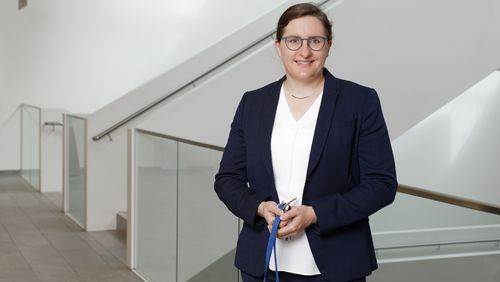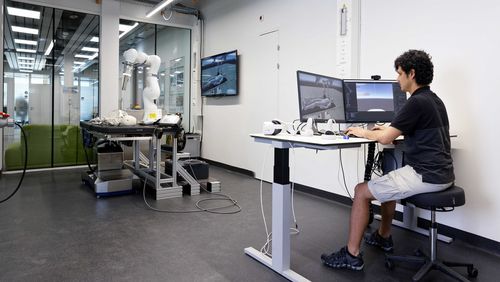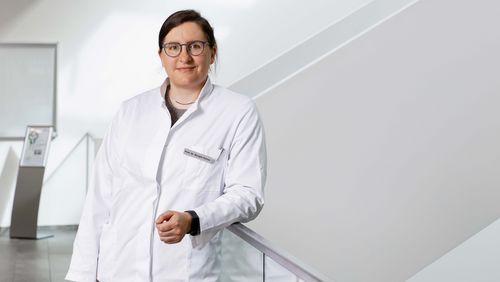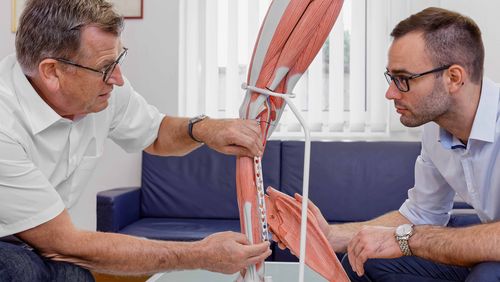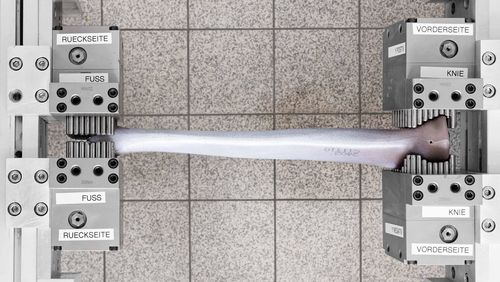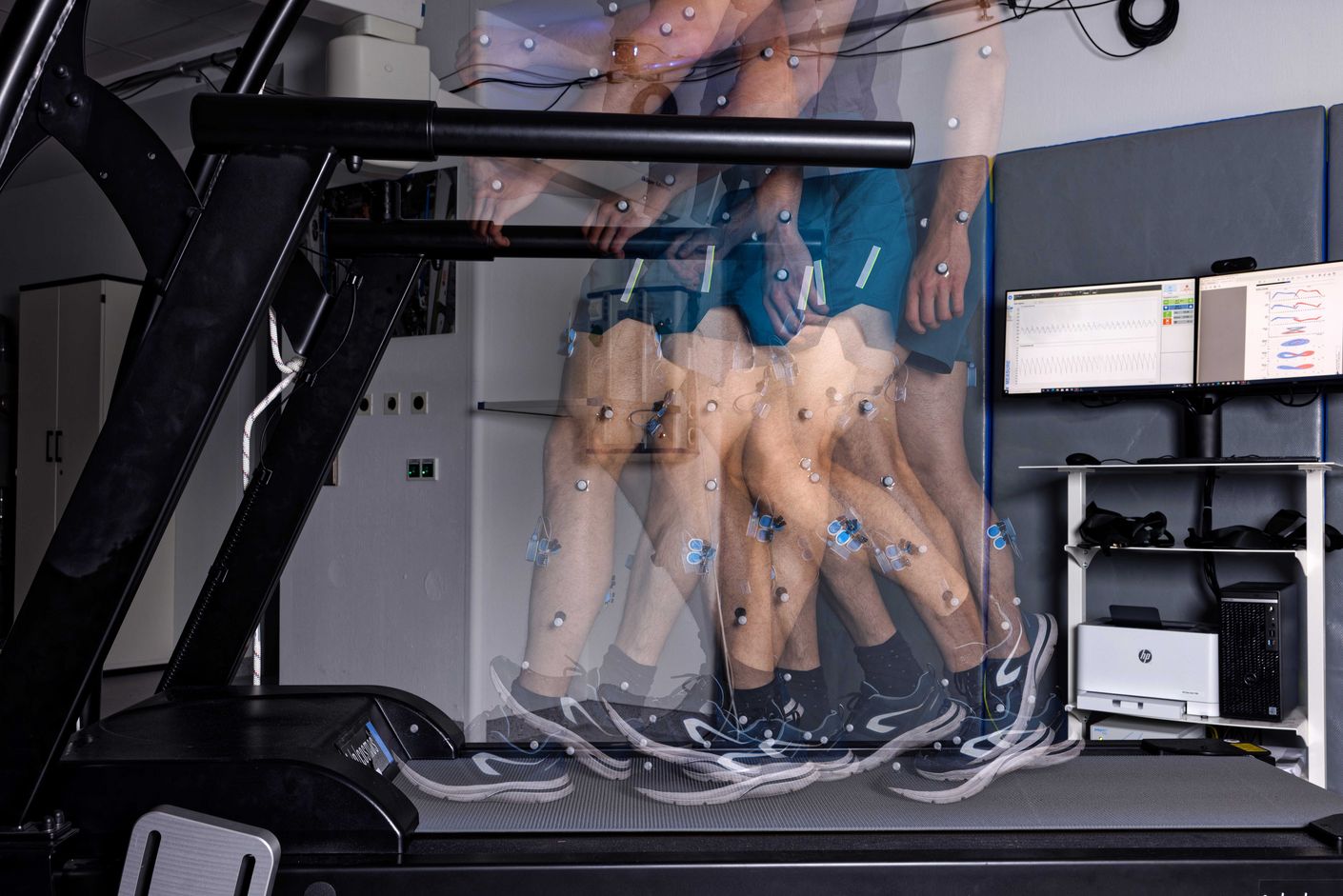
Database in a shoe
Researchers at Saarland University Medical Center are developing intelligent implants that not only stabilise a fractured bone, but also detect—and counteract—incorrect weight-bearing throughout the healing phase. They have now published three studies with findings that are instrumental in correctly assessing the healing process of bone fractures.
The way we walk speaks volumes about our health. For instance, studies have shown that people who walk faster tend to live longer—and have better cognitive function. But gait analyses also hold potential for monitoring the healing process after a leg injury, as demonstrated in recent investigations by the research team led by Tim Pohlemann and Bergita Ganse from the Smart Implants project at the Saarland University Medical Center in Homburg, Germany, which receives funding from the Werner Siemens Foundation.
The researchers aim to revolutionise treatment of lower-leg bone fractures by developing intelligent implants that improve and accelerate healing. In addition to stabilising the broken bone, the new smart implants will provide information on how well the fracture is healing—and also detect incorrect weight bearing. If a break isn’t healing well, the implant will react.
The implants must also be capable of predicting whether certain pressures acting in the leg and on the fracture will positively or negatively affect the healing process. And this is where gait analysis comes into play. How quickly does the patient walk? How long are their steps? How heavily do they step, and how forcefully do they push off? How big are the differences between the injured and the healthy leg? All these factors are potential indicators of the healing process.
Few gait-analysis studies to date
“Our aim is to identify the parameters that indicate healing and then use them in our implants,” says Bergita Ganse, Werner Siemens Foundation Endowed Chair for innovative implant development at Saarland University. To gain an overview of current knowledge on the subject, the researchers collated and evaluated the studies published to date, although Ganse expressed surprise at how few gait-analysis studies measuring the healing of lower-leg fractures have been conducted thus far.
The few existing studies show, unsurprisingly, that the measured parameters improved throughout the healing process—an increase in walking speed, for example. A particularly key finding for the researchers was that a patient’s gait indicates when fractured bones are knitting together only slowly—or not at all. This problem occurs in approximately five to fourteen percent of all lower-leg fractures, but is often detected late, as the fracture site is X-rayed only every few weeks.
According to the team’s recently published systematic review, gait analyses hold potential for early detection of delays in the healing process. Ganse says that walking speed and asymmetry between the left and right leg are especially promising indicators.
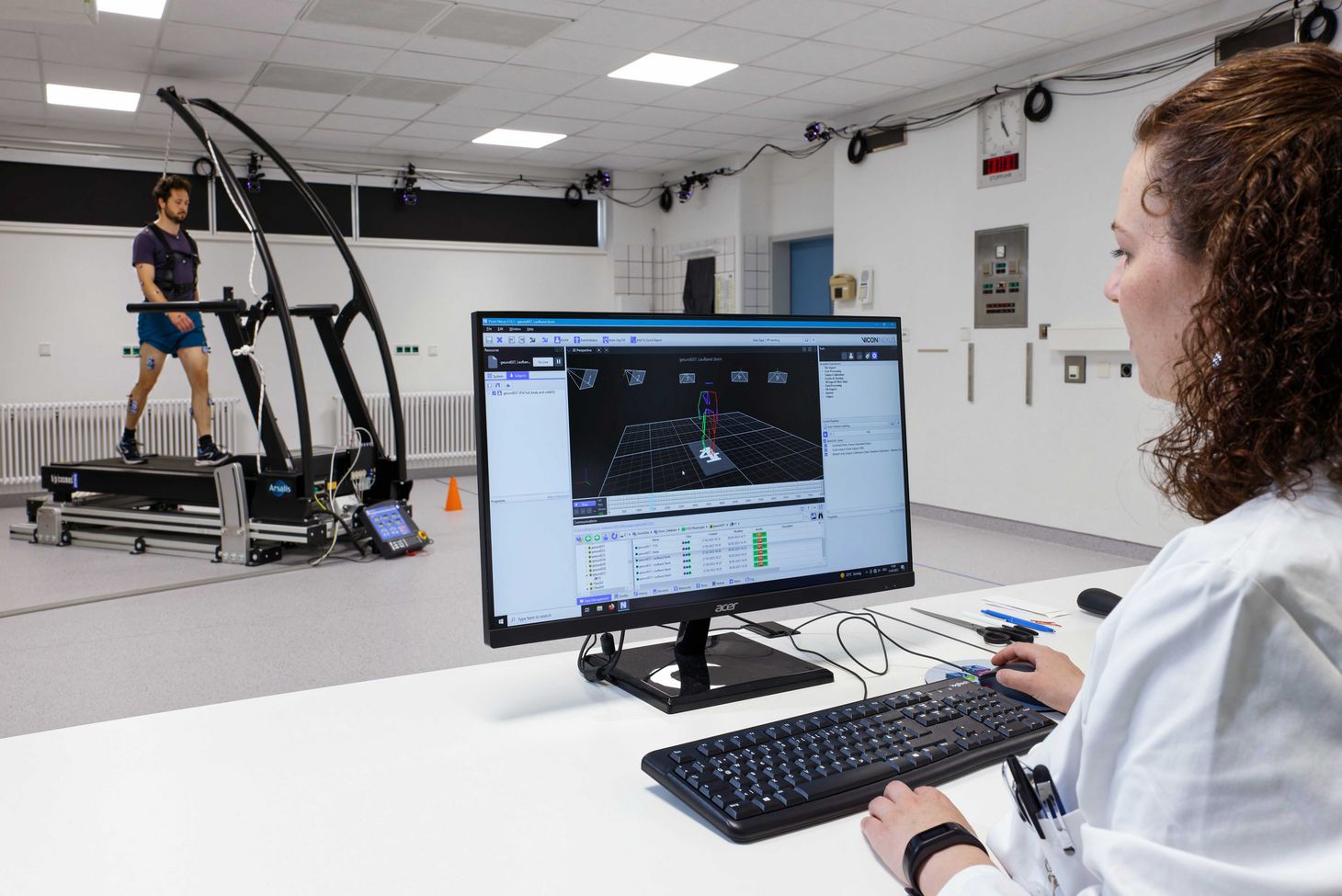
Height, weight and terrain
The researchers are also conducting their own gait analyses in a customised gait laboratory, where test patients wear shoes with thin insoles containing sixteen pressure sensors that continually measure the forces acting on each leg. Using this methodology, the team observed the gait of thirty-seven healthy persons and analysed how gait is influenced by age, weight, height, body mass index and handgrip strength (as an indicator of general muscle strength) in another recently published study.
It became apparent that these factors account for almost half of the differences in the strength curve, in other words, the transmission of force throughout the cycle of stepping, rolling and pushing off with the foot. “We have to consider the influence of these factors when our implant undertakes an analysis,” says Tim Pohlemann, director of the Department for Trauma, Hand and Reconstructive Surgery at Saarland University Medical Center. At the same time, the team has other publications in the pipeline that examine additional factors affecting the strength curve: for instance, the role of surface (asphalt, sand, grass, gravel) and slope (uphill or downhill).
In their third recently published study, the researchers applied the findings in a prototype on a patient. They conducted experiments using the sensor-equipped insoles and other patient tests—and forecasted healing processes for different treatment methods. The simulation forecast was in line with the actual treatment method used, says Bergita Ganse.
Fracture-site massages to speed up healing
“It’s important for us to study more cases,” says Tim Pohlemann, “so we can calculate which movement conditions aid or hinder the healing process.” Ultimately, the smart implants must be able to respond to negative developments—exactly how will be seen in the course of the project. One possibility is that a patient receives a warning signal if excess pressure is exerted on the fracture when, for instance, walking up or down stairs.
Another idea is that the implant, which has elastic properties, autonomously intervenes by stiffening, or by stimulating the fracture site at the right moment through micromovements. “We know that certain movement patterns promote healing,” says Tim Pohlemann. And Bergita Ganse further explains that in two studies, researchers had attached a device to a patient’s leg and inserted screws down to the bone: “This allowed them to massage the fracture site and showed that the healing process could be shortened by up to one quarter.”
If such massages can be carried out by an implant—that must be screwed to the broken limb in any case—the treatment of bone fractures could be greatly improved. The method would prevent unnecessary follow-up treatment and pain, and also reduce healthcare costs.
